Synology Vs QNAP – E10G18-T1 Versus QXG-10G1T
With 10-gigabit ethernet becoming so popular this year, it is not a huge surprise that many users who own Synology or QNAP NAS drive with an available PCIe slot are considering upgrading to 10Gbe. The benefits are many and the costs have come crashing down, so both QNAP and Synology have capitalised on this by releasing their very own first-party 10G NIC upgrades. A quick glance at both of these cards show very little difference, other than the brand name and the price, yet today I want to discuss the key differences between the Synology E10G18-T1 Card and the QNAP QXG-10G1T upgrade, to see which is best for your 10Gbe NAS environment today and tomorrow.
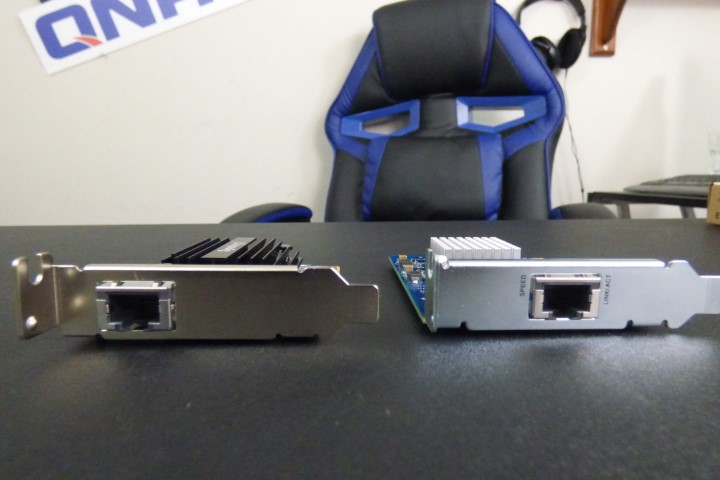
Why Should you Upgrade to 10Gbe NAS?
10Gbe has been around for almost a decade, however, the price to upgrade your infrastructure to this 10x network connection once cost tens of thousands of pounds. Fast forward to 2018 and we find that you can upgrade an infrastructure featuring 2-3 computers and your NAS to 10G for less than £500 ex.VAT. Additionally, with just two 10Gbe upgrade cards and a single LAN cable, you are able to directly connect to your NAS and edit over 10-gigabit ethernet – more than enough to edit HD and some 4K Media live on the NAS. Whilst doing this, you can connect the NAS via 1Gbe RJ45 to your local router or switch and enjoy network and internet connectivity at exactly the same time! For both professional and amateur photo/video editors, this is a tremendous improvement to your workflow and greatly assists live editing, distribution and backups – saving you time and money.
Synology E10G18-T1 vs QNAP QXG-10G1T – What’s in the Box?
The QNAP QXG-10G1T 10Gbe card arrives at around £95 without VAT, whereas the Synology card arrives at just over £120 without VAT. Given this price difference, you would be justified in assuming that the Synology NIC features more accessories and more components in its retail package. However, the truth is that despite the QNAP being around £20-30 cheaper, it arrives with significantly more accessories inside.
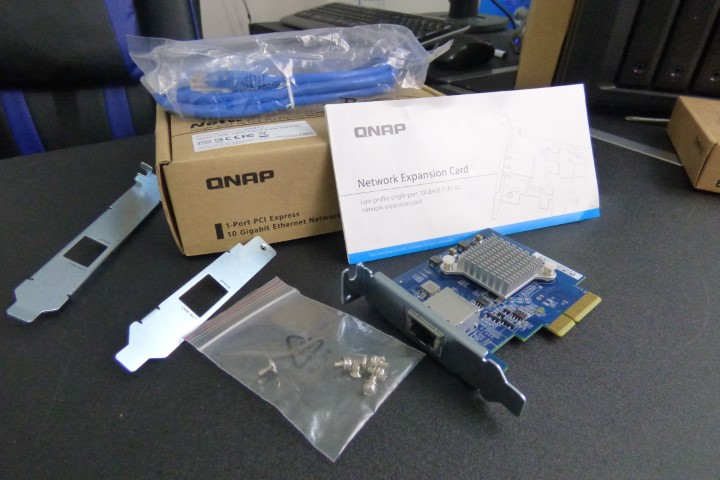
The QNAP QXG-10G1T retail box arrives with the 10Gbe PCIe card, a selection of three different backplanes so the card can be used in both desktop compact and rackmount chassis, screws for the alternate backplanes, quick start instruction manual and even a 1 metre cat6a LAN cable to get you started.
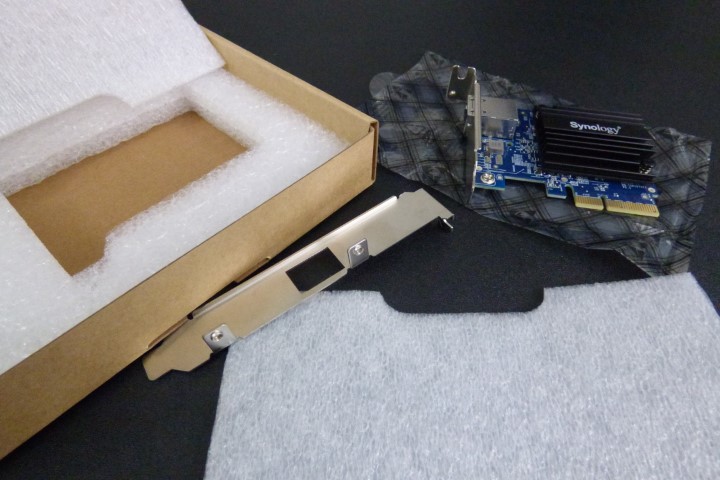
Surprisingly, the Synology E10G18-T1 card arrives with just the 10Gbe card and an additional rackmount backplane – no manual, no cable, no additional backplanes or screws. In terms of hardware VS value for money, there is no denying that the QNAP card seems to give you more for your money.
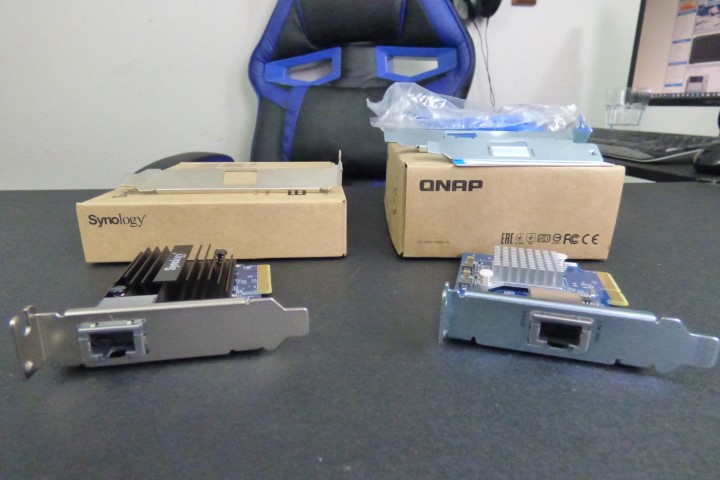
Synology E10G18-T1 vs QNAP QXG-10G1T – Hardware Design
Both the Synology E10G18-T1 and the QNAP QXG-10G1T arrive with the same controller chip on board, the Aquantia AQtion AQC107 chip. This has become a very popular network controller for 10Gbe in 2018, and is also used on the Buffalo, Sonnet and Akitio 10gbe cards too. Both 10Gbe NIC upgrades from Synology and QNAP are very similar in size, and are both PCIe 3.0 X4 in architecture. However, the big difference between them is the heat sink. As both the QNAP QXG-10G1T and Synology E10G18-T1 do not feature active cooling fans, they both feature a passive heatsink to assist in dissipating heat from the Aquantia controller and maintain high performance through this card
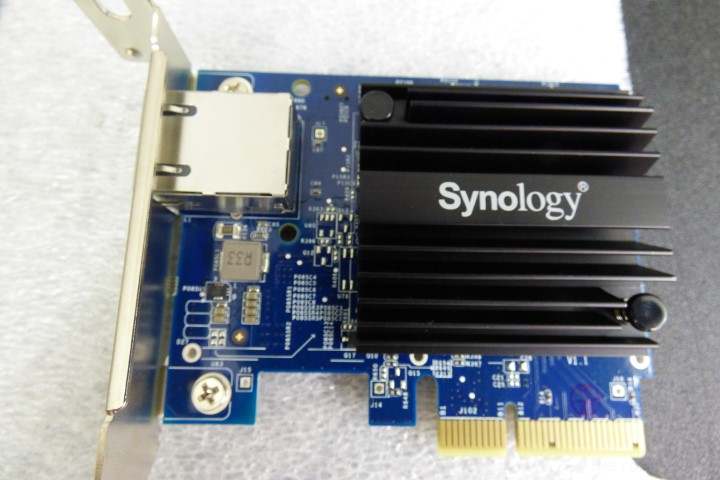
In my previous review of the Synology E10G18-T1 NIC upgrade card for NAS, I went to particular lengths to highlight the unique and impressively sized heatsink that Synology have included with this hardware. Not only is it almost two times bigger than the QNAP heatsink, but branded, made of Higher quality material and has an impressive fan-out design.
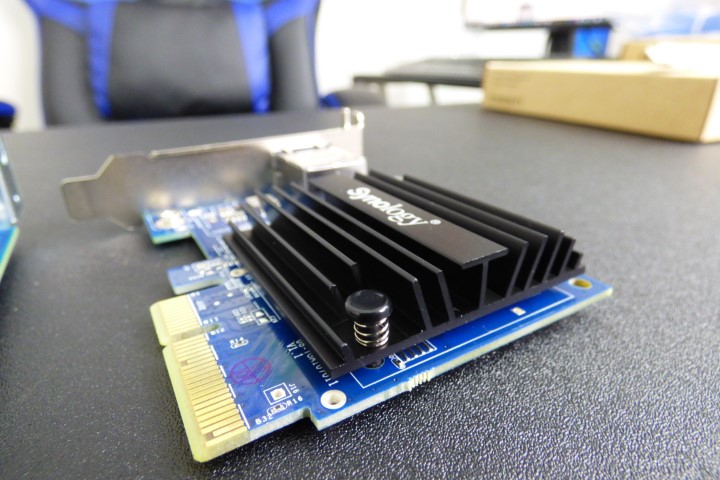
This fan out heat sink design on the Synology E10G18-T1 is more than just a pretty feature and helps dissipate heat sideways in a way that the QNAP heatsink cannot do to the same degree. This extra touch was a pleasant surprise on the E10G18-T1 NIC and definitely scored high points with me.
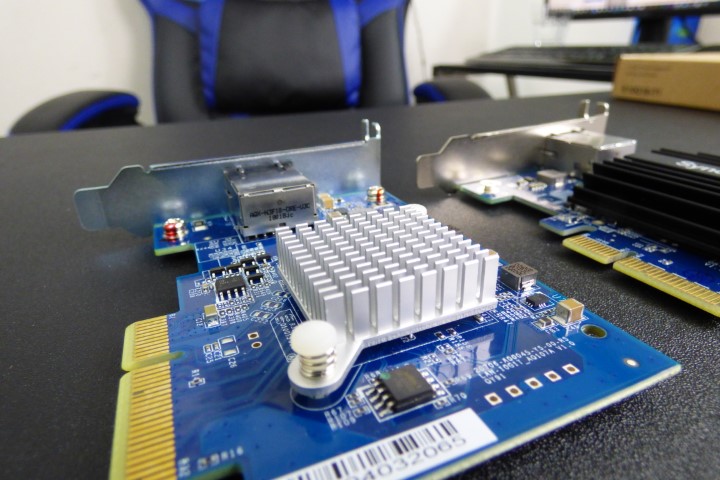
The QNAP heatsink is a little more understated, it amply covers the Aquantia AQtion AQC107 controller chip, but there is no denying that the heat sink on the QNAP QXG-10G1T is the smaller of the two. It definitely does the job and keeps the chip cool but there seems alot of individual chips on the QNAP NIC than the SYnology, despite them having equal speeds in practice.
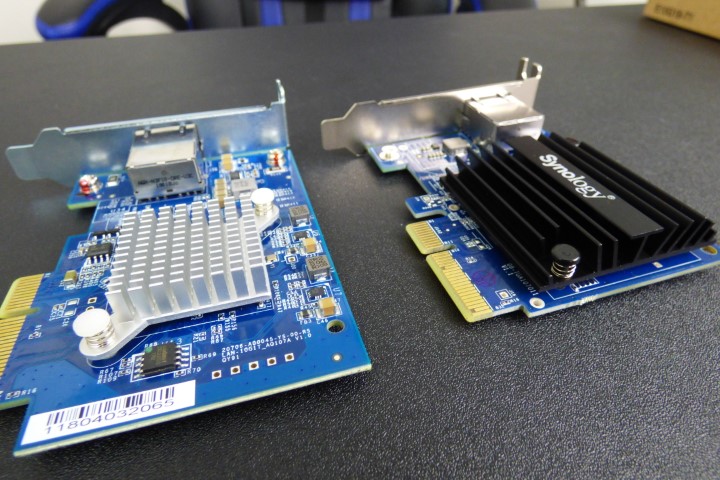
Both of the 10Gbe NIC upgrade cards perform identically in file transfers and black magic, so it is hard to say whether a big or small heatsink is beneficial in the short-term – you would need to use this card for several years, or months of intense use, to see it benefits.
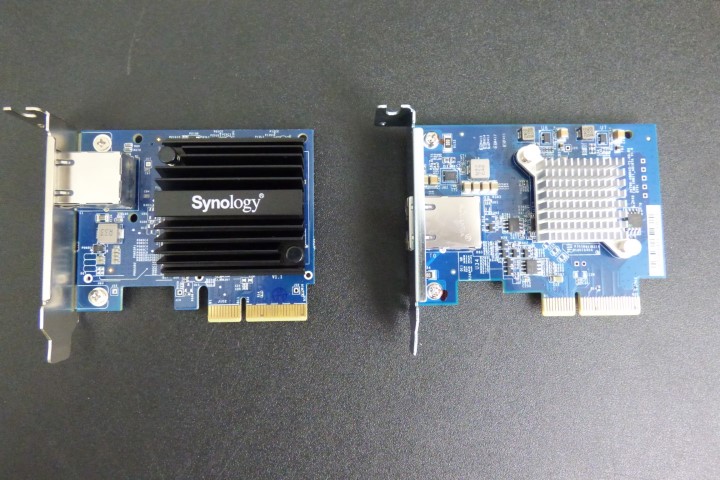
Synology E10G18-T1 vs QNAP QXG-10G1T – Support and Compatibility
As you would expect, both the QNAP QXG-10G1T and the Synology E10G18-T1 are compatible with their respective brand of NAS servers. Additionally, we have tried to install a QNAP card in a Synology NAS (and vice versa) to fairly mixed results.
In terms of pure industry-wide compatibility, the QNAP QXG-10G1T card is the greater of the two. The Synology E10G18-T1 NIC can only be used to upgrade a Synology NAS server, where has the QNAP QXG-10G1T 10Gbe card can be used as a NIC upgrade for QNAP NAS, Linux NAS, Windows PC and other server devices. This means that not only is it a lower priced card, but also you can buy two for less than £200 and upgrade both your NAS server and your host PC.
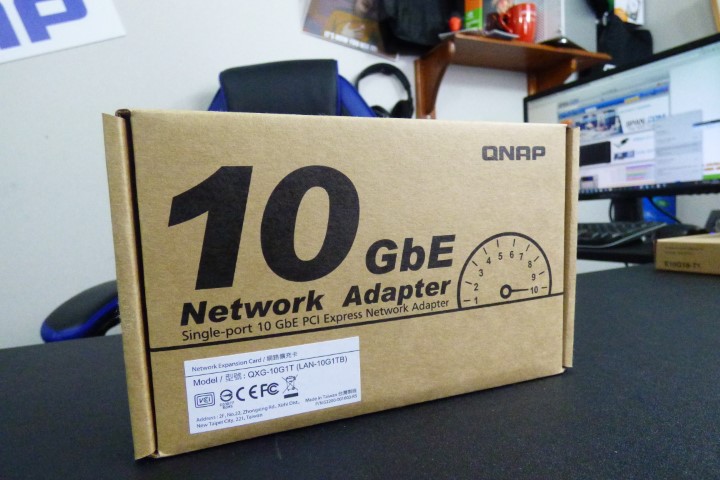
Although the Synology 10GBe card can only be used in a Synology NAS, it is worth highlighting one huge advantage the Synology card has over the QNAP QXG-10G1T for the consumer. The QNAP QXG-10G1T NIC arrives with one year manufacturer warranty coverage. This means that if your QXG-10G1T card suffers a hardware fault in the first year of ownership, QNAP will provide a replacement.
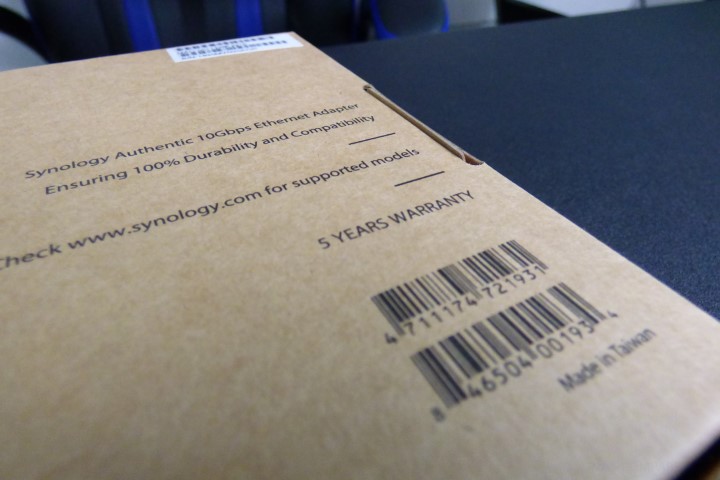
However, the Synology E10G18-T1 card arrives with 5 years of warranty, which is HUGE! I have reviewed and used many, many 10G NIC cards over the years and only Synology provide 5 years of warranty. Even with the price difference, 5 years of manufacturer coverage in the event of hardware failure is a big deal and stand as a testament to the faith that the brand has in its hardware. As with any piece of hardware, the longer the warranty the more confidence a manufacturer has in it lifespan.
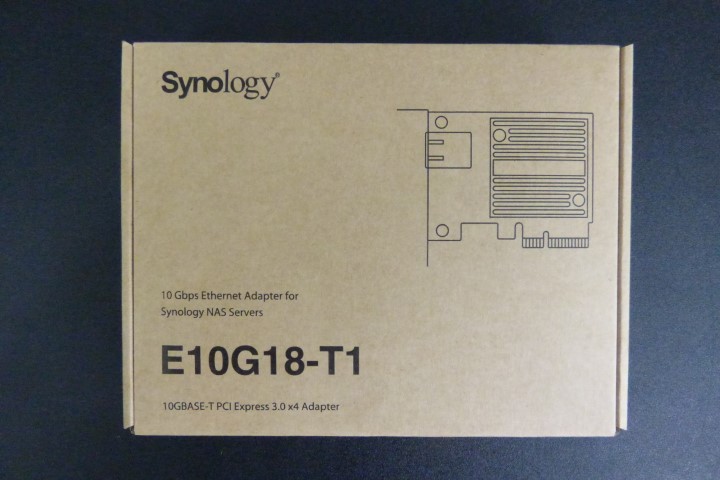
Synology E10G18-T1 vs QNAP QXG-10G1T – Conclusion
Ultimately, the manufacturer of your NAS will make all the difference in which of these to cards you will buy. Chances are that if you own a QNAP NAS, that you will buy the QNAP NIC QXG-10G1T card – likewise for Synology. But if you are buying your 10Gbe network solution all together there is no denying that the longer warranty and better designed heatsink on the Synology NIC makes it the better choice overall. That said, the QNAP QXG-10G1T card is still one of the best 10Gbe upgrade cards I have ever used and with a price tag of around £80-90 ex.VAT, yet still includes all the accessories and larger hardware compatibility, it is a fantastic 10Gbe card nevertheless.
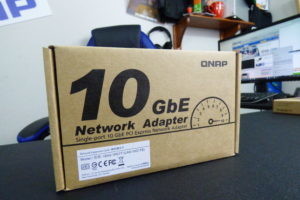
QNAP QXG-10G1T – £120+ ex.VAT |
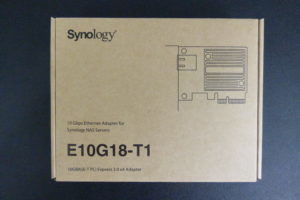
Synology E10G18-T1 – £120+ ex.VAT |
 |
 |
🔒 Join Inner Circle
Get an alert every time something gets added to this specific article!
This description contains links to Amazon. These links will take you to some of the products mentioned in today's content. As an Amazon Associate, I earn from qualifying purchases. Visit the NASCompares Deal Finder to find the best place to buy this device in your region, based on Service, Support and Reputation - Just Search for your NAS Drive in the Box Below
Need Advice on Data Storage from an Expert?
Finally, for free advice about your setup, just leave a message in the comments below here at NASCompares.com and we will get back to you. Need Help?
Where possible (and where appropriate) please provide as much information about your requirements, as then I can arrange the best answer and solution to your needs. Do not worry about your e-mail address being required, it will NOT be used in a mailing list and will NOT be used in any way other than to respond to your enquiry.
Need Help?
Where possible (and where appropriate) please provide as much information about your requirements, as then I can arrange the best answer and solution to your needs. Do not worry about your e-mail address being required, it will NOT be used in a mailing list and will NOT be used in any way other than to respond to your enquiry.

|
 |
ZimaOS is the BEST Beginner NAS OS - Watch Your Back UnRAID and TrueNAS !!!
30TB Hard Drives are TOO BIG ! (and here is why)
COMPLETE UGREEN NAS Setup Guide - 2025 EVERYTHING VERSION
$110 USB4 to 2x10Gb Adapter Review - What the WHAT?
UGREEN NAS Now has iSCSI, 2FA and Jellyfin (and more) - FINALLY!
Seagate 30TB Ironwolf and EXOS Hard Drive Review
Access content via Patreon or KO-FI





DISCUSS with others your opinion about this subject.
ASK questions to NAS community
SHARE more details what you have found on this subject
CONTRIBUTE with your own article or review. Click HERE
IMPROVE this niche ecosystem, let us know what to change/fix on this site
EARN KO-FI Share your knowledge with others and get paid for it! Click HERE